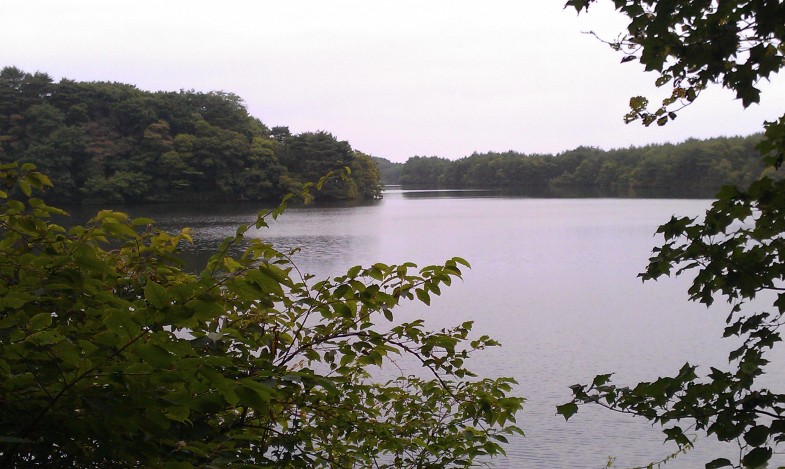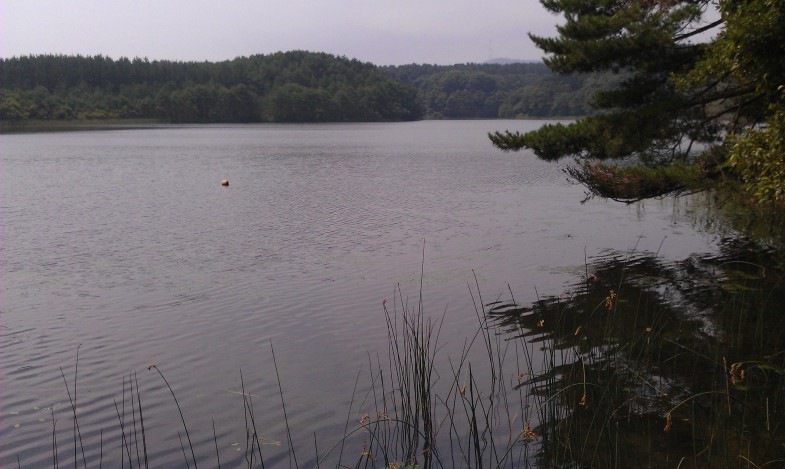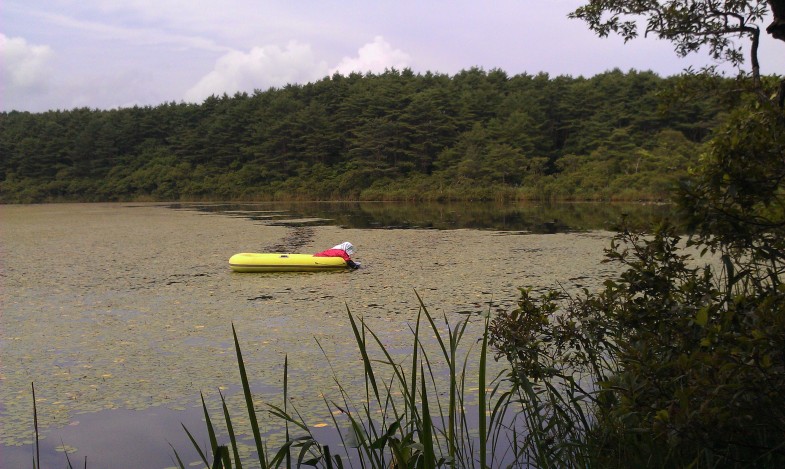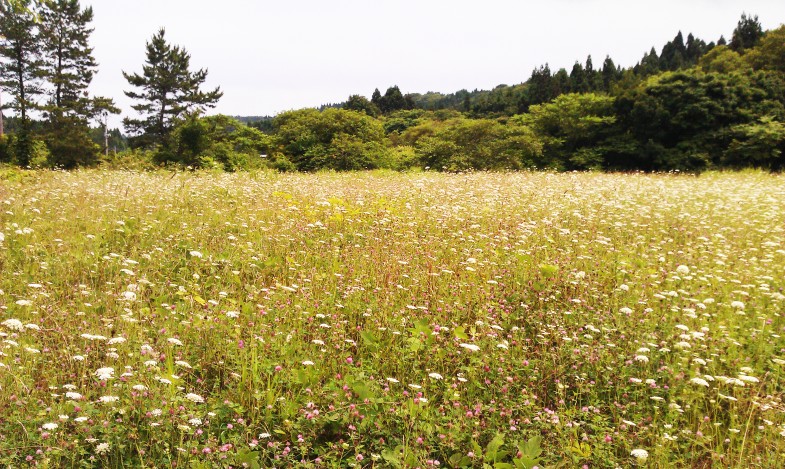


Μια "λίμνη Sand Dune" σημαίνει ότι οι αμμώδεις παραλίες δημιουργούν κυματισμούς λόγω του ανέμου και άλλων παραγόντων.、Πρόκειται για ένα βάλτο γλυκού νερού που φυσικά σχηματίζεται από ποτάμια που ρέουν στις κοιλότητες (όπως το Sagata, το νομό Niigata).。Τα ρεύματα και τα κύματα των ωκεανών προκαλούν την άμμο να ανεβαίνει σαν τράπεζα και να μπλοκάρει την έξοδο、Είναι επίσης διαφορετικό από τις υφάλμυρους λίμνες όπως η λίμνη Saroma και Hachirogata.)。Η ίδια η λίμνη Sand Dune είναι ένα πολύτιμο όντας που χάνεται σε όλο τον κόσμο.、Δημιουργεί ένα βιολογικά πολύτιμο περιβάλλον。
Sand dune lake is a natural freshwater pond in a sandhill. It was shaped by wind. The wind had been carring sand and formed ups and downs, and then water stream into hollow places. It is not only very valuable existence itself in the world but also it gives important environment for biodeversity that’s being lost.
Στο χωριό Higashidori、Υπάρχουν πολλές μεγάλες και μικρές "λίμνες αμμόλοφων" (υπάρχουν 13 ονόματα των βάλτων μόνο)。Το χωριό Higashidori, οι αμμόλοφοι των δασών και οι υγροτόποι του Monkey έχουν επιλεγεί ως ένας από τους 500 σημαντικούς υγροτόπους της Ιαπωνίας (μπορεί να ειπωθεί ότι τα περισσότερα μέρη της χερσονήσου Shimokita έχουν λάβει αυτή την επιλογή).。Αυτός ο πίθηκος είναι ο Dune Forest Sand (πλάτος 1-2km)、Οι αμμόλοφοι shimokita, οι οποίοι συνδυάζουν το συνολικό μήκος των 17 χιλιομέτρων) και τους αμμόλοφους που έχουν εισέλθει λίγο εσωτερικά, είναι、Είναι σπάνια γνωστό, αλλά είναι στην πραγματικότητα ο μεγαλύτερος αμμόλοφος της Ιαπωνίας.。Ο λόγος που είναι άγνωστος、Τα ανθεκτικά και τα ανθεκτικά σε άμμο δάση περιβάλλουν τους αμμόλοφους.、Είναι δύσκολο για τους ανθρώπους να δουν、Το μεγαλύτερο μέρος του υπουργείου Άμυνας και άλλοι το χρησιμοποιούν σε χώρους βαλλιστικών δοκιμών.、Επειδή απαγορεύεται η είσοδος。
There are many dune lakes in Higashi-dori village. Named lakes are minimum 13s. Salugamori sandhill (1~2 km width, 17 km length) include the rear wetland in this village has selected one of 500 of the important wetland of Japan (Actually most of Shimokita peninsula is selected also). Additionaly, Shimokita sandhill (includ this Salugamori sandhill with the next ones) is really the biggest one in Japan. However almost all japanese don’t know of it. One of the reason is that this place is hidden from the roads by pine grove for protect the wind and the sand. The other one, here is off limited, because this ares has been useing for test site of trajectory of Ministry of Defence (MD).
Η ίδια η λίμνη Dune βρίσκεται έξω από το Υπουργείο Άμυνας.、Μερικοί φαίνεται να χρησιμοποιούνται για ψάρεμα.。Ωστόσο, τα δάση πευκοδάσεων που ανήκουν σε ανεπιφύλακτα και άμμο έχουν μεγαλώσει、Πολλοί από τους δρόμους που οδηγούν στο βάλτο αρχίζουν να εξαφανίζονται。Η μείωση του πληθυσμού και η γήρανση προχωρούν επίσης εδώ、Δεν διεξάγεται ακαδημαϊκή έρευνα τώρα.。
These are out of the area of MD. A few lakes of it look as useing fishery sometimes but not often. Most of the roads to go there is being lost by growing thickly weeds and pine grove. Creasing depopulation and ageing there. Academic reserch stopped now.
Η φωτογραφία είναι από πάνω (επενδεδυμένη από βορρά προς νότο)、Όμονα、Σακώουμα、Αρανούμα。Το μέγεθος και το βάθος ποικίλλουν ελαφρώς, αλλά όλοι παραμένουν φυσικά.。Το Onuma είναι γαρίδα Tenaga、Το Sakyonuma είναι διάσημο για το Aegagropila Linnaei.、Τι συμβαίνει τώρα που δεν ερευνήσαμε;。Το Aranuma έχει βάθος 1-2 μέτρων、Αυτή τη στιγμή επιλέγεται το Junsai (Brasenia Schreberi).。
Photo:(above) O-numa. Small river prawn lives in. (midlle) Sakyo-numa. Sakyo-numa is famous for “Hime-malimo” (small moss ball), but how is it now? (bottom) An old woman was picking “Jun-sai” (the water shield) from the water at lake Ala-numa. ※numa means lake or pond. All of dune lakes are Nature.

